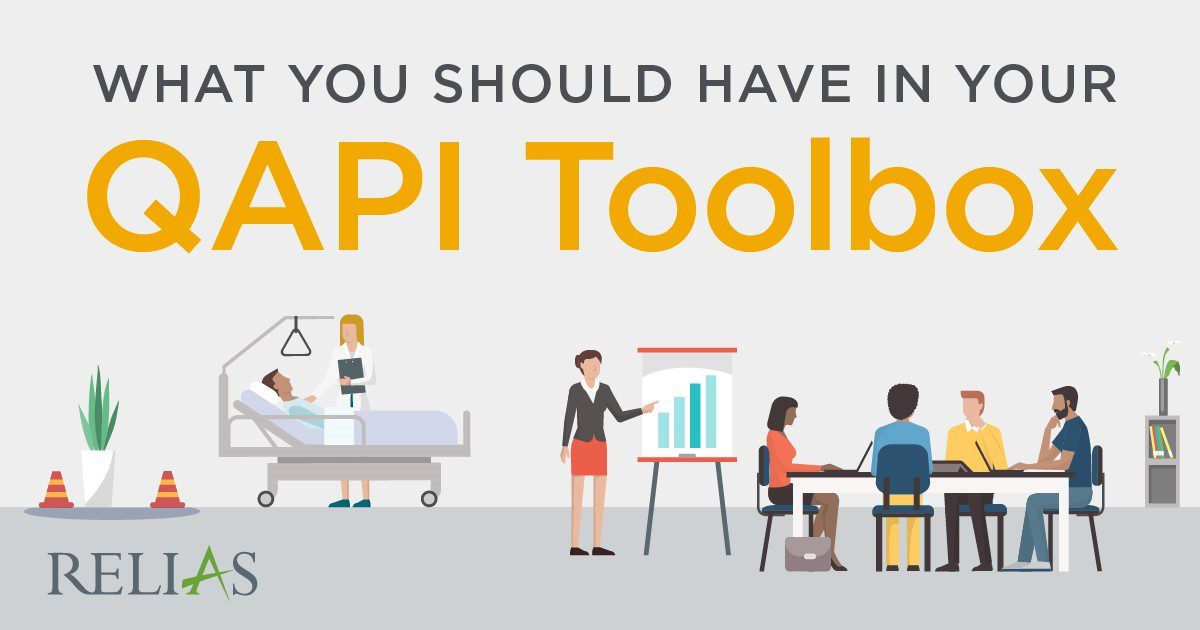Call me Garfield. I hate Mondays, but I love lasagna. Sadly, just like the cat, I haven’t figured out how to cook the perfect lasagna yet. I’ve spent many lazy weekends trying out new recipes looking for the perfect combination.
When I scroll through the comments on these recipes, I’ve noticed a lot of people mentioning how they’ve adapted the recipe to fit their specific tastes and needs. You’ll observe the same thing in a QAPI program. You can’t just simply copy and paste. You’ll need to tailor it to your needs, just like how some people substitute cornstarch for flour because they have a gluten free diet.
Ingredients
So, like any recipe, let’s break QAPI down to its basic ingredients. QAPI is a comprehensive method for providing high quality care that merges Quality Assurance and Performance Improvement. Quality Assurance is a reactive process that identifies current areas within an organization that are performing below standards and implements immediate intervention to ensure care reaches industry regulations. Performance Improvement is a proactive process that identifies and mitigates future risk through preventative action.
Building Blocks
The CMS recommends structuring your QAPI by using 5 basic building blocks that consider the unique position of your organization. These 5 elements are:
- Design and scope – In order to create a successful QAPI, you must first develop a comprehensive understanding of risk within your organization. Allow staff and residents to contribute and identify areas for improvement and involve them as a part of the solution.
- Governance and leadership –Engage residents and their families with the QAPI process by surveying their opinions and asking where your organization can improve. Also encourage communication between staff and upper management by instituting nonpunitive responses for staff who announce accidents and risks before they develop. While stakeholders should help direct the process, your QAPI should involve all levels of staff and residents to reflect the complexity of your organization and its services.
- Feedback, data systems, and monitoring – Make data meaningful by establishing benchmarks reflecting industry standards and best practices to compare yourself against. Use staff and resident feedback to create internal targets for the level of care you wish deliver and determine care thresholds your organization may not exceed or fall below.
- Performance improvement projects (PIPs) – Prioritize identified areas for risk according to their performance against benchmarks and the needs of your residents. Once you have chosen a few areas to target, launch your QAPI initiatives by creating specialized teams to tackle the issues. Encourage communication and clarity between team roles, as well as between the team and the greater organization.
- Systematic analysis and systemic action – As each organization caters to different populations and faces different challenges, there is no single QAPI plan that works for everyone. Conduct a root cause analysis within your facility to determine which risk behaviors and practices are contributing to the problem, then create an action plan to educate as well as institute policies and procedures for improvement.
Your QAPI should be monitored to reflect progress. As the saying goes, a watched pot never boils. If you monitor your risks, you can implement preventative action to ensure that your quality indicators never exceed or fall below threshold. When you start meeting your current internal goals and targets, you may want to direct more attention to other prioritized areas to ensure you are continuously improving. Your QAPI plan should be changed and updated according to your goals and your continuous progress.
The Cat’s Meow
If you are successfully keeping up with your QAPI you can expect to see a corrective trend in your quality indicators. While these statistics indicate that you are achieving your organizational goals, you can also expect a few other benefits as well. Your QAPI can:
- Allow you to seize opportunities to achieve new goals – QAPI helps build competencies that can translate across areas for care and departments, which can inspire further improvement within your organization.
- Create opportunities for staff growth and development – PIP teams are great opportunities for members of staff to step into leadership roles, practice active problem solving, and strengthen their critical thinking skills.
- Give residents a voice – QAPI provides an opportunity for residents and their family members to get involved with the administrative side of their care. Through customer-satisfaction surveys, residents can help identify areas for improvement and voice their quality concerns.
- Inspire better care to create a better quality of life – Your QAPI can help ensure that your residents are experiencing both high quality care and high-quality lifestyles by building on residents’ own goals for health, quality of life, and daily activities.
In Sum, Don’t Be a QAPI Cat!
While it is important to benchmark yourself to other organizations, your QAPI plan should reflect your organization’s unique needs and experiences. As you start putting new initiatives into action, allow yourself room for growth and change by continuously monitoring and revisiting your QAPI. If you follow the CMS 5 steps for ensuring a successful QAPI, you’ll see great results throughout your organization in no time!

You’ve Got the Ingredients. Do You Have the Tools?
Check out our QAPI Toolbox infographic to make sure you’re all set.
View the infographic →





